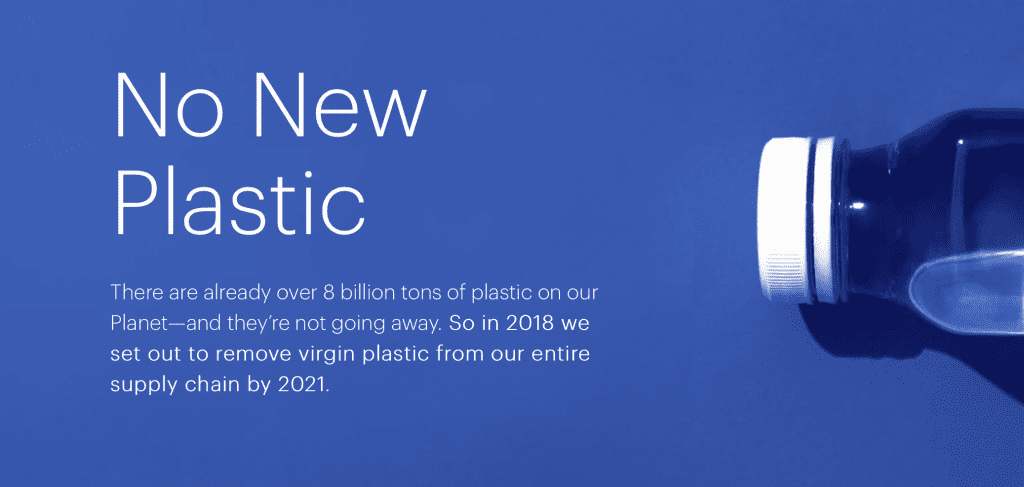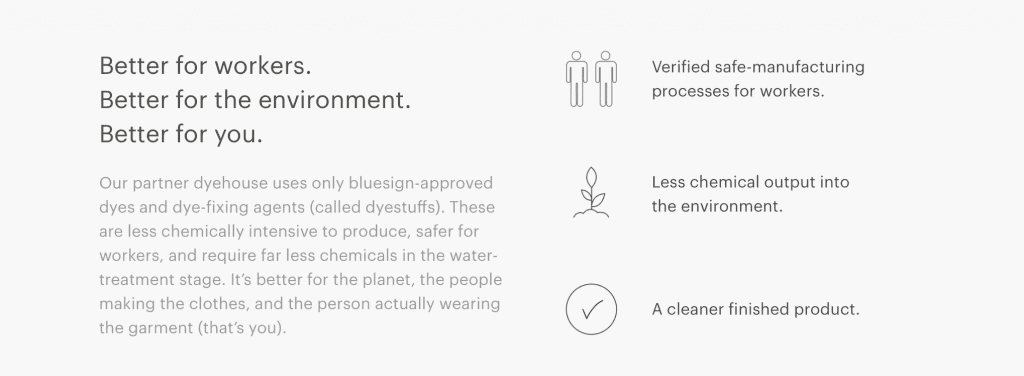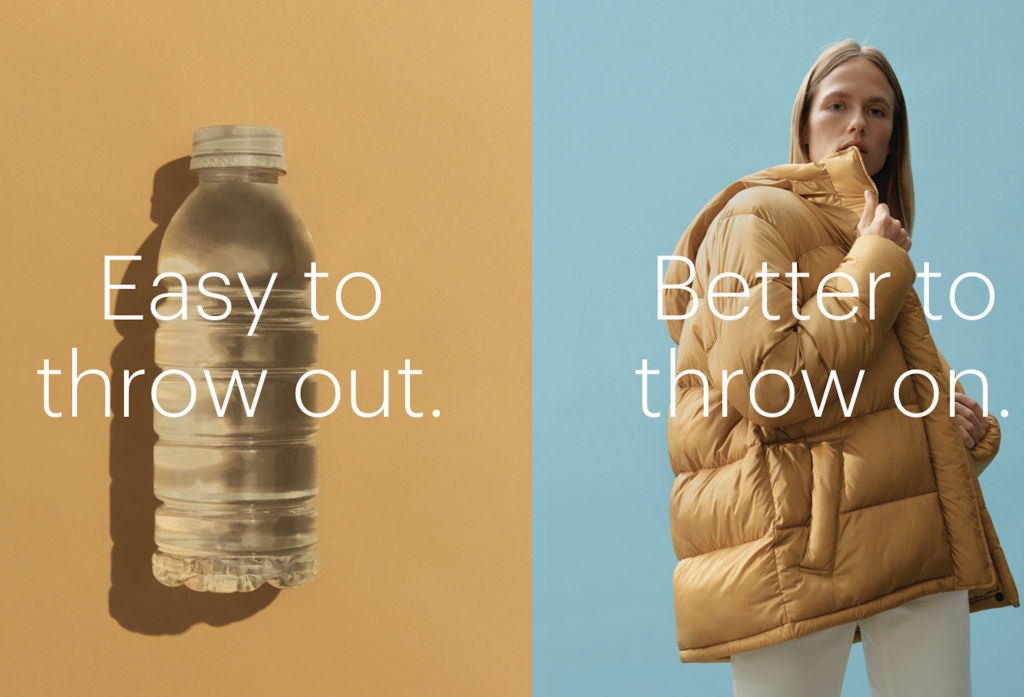Sustainability-centric claims made by Everlane on its website brought the brand under the microscope of a consumer protection watchdog in what is one of the latest indications that governmental agencies and independent regulators, alike, are increasing their attention to the rising number of Environmental, Social, and Governance claims being made in the marketplace. In a determination issued last month, the National Advertising Division (“NAD”), a division of the independent, non-profit BBB National Programs, stated that certain environmental benefit claims that Everlane made on its e-commerce site in connection with its ReNew line of clothing are sufficiently supported by evidence, but others, namely ones in which it asserts that certain products are made using dyes that are “safer for the environment” should be modified to include clarification for consumers.
In connection with its investigation into the Everlane’s marketing language, which stemmed from the “independent monitoring of truth and transparency in U.S. national advertising” that it routinely carries out, the NAD pointed to four different types of claims made by the San Francisco-based apparel company: aspirational claims, recycled materials claims, claims about the number of recycled bottles, and “safer for the environment” claims.
Everlane Environmental Benefit Claims
Primarily, the truth-in-advertising entity looked at the aspirational claims that Everlane made, namely, that “in 2018, we set out to remove virgin plastic from our entire supply chain by 2021,” as part of a “no new plastic” initiative. While aspirational in nature, the NAD determined that Everlane “provided a reasonable basis” for making the “No New Plastic” claim because it is limited to “a specific environmental benefit” – removing all virgin plastic from its supply chain – and asserted that the company’s website explains how far it has come in achieving this goal.

Second, the NAD referred to Everlane’s statements about certain products being “made from recycled plastic bottles, [thereby] diverting waste from landfills and lessening dependency on fossil fuels.” The NAD also determined that this is also a qualified claim based on Everlane’s compliance with Global Recycled Standard, a voluntary international standard that relies on well-established international and regulatory guidance for what constitutes recycled content, including the Federal Trade Commission’s Guides for the Use of Environmental Marketing Claims.
Third, the NAD pointed to Everlane claims about the number of bottles used to make individual garments, such as specifying that “60 plastic bottles [are] renewed” to make its parka, and 15 are renewed to make its “half zip,” as well as its “the sweatshirt” styles. These claims are also above-board in the eyes of the NAD, as Everlane explained that its mills and yarn spinners work with plastic pellet producers to calculate the quantity of plastic needed to produce recycled polyester yarns, which the mills then use to calculate the amount of plastic used to create the finished fabric per yard.
And finally, the NAD turned to claims that Everlane made about its use of bluesign®-approved dyes, which it says are “safer for dyehouse workers and better for the environment.” Despite signing off on the previous claims, the NAD pushed back here, recommending that the “Safer for the Environment” claim be modified because “in context [it] does not make clear that chemical safety is one aspect of a larger 5-point environmental impact assessment,” nor does it specify that Everlane’s use of Bluesign is in a nascent stage.” Specifically, the NAD suggested that Everlane explain that Bluesign is an independent third-party certification designed to remove harmful chemicals from the manufacturing process, and that its adoption of the certification is still limited, as “at present, 12 percent of Everlane’s mills (fabric suppliers) and 10 percent of its factories (finished goods suppliers) are Bluesign-certified.”

The NAD stated in its determination that during the pendency of the proceeding, Everlane opted to permanently discontinue a couple of additional sustainability claims, and so, the ad watchdog did not review those claims on the merits. These included Everlane’s previously-used assertion that the “[number increasing quickly to the millions] plastic bottles [were] made since you landed on this page,” and its claim that it “plastic is a really big problem,” but that it has found a way to “take the plastic that is already here and turn it into something meaningful” by way of ReNew, “a collection of outerwear made from discarded plastic bottles, about 3 million of them … Made to last for decades instead of seconds.”
In response to the NAD’s findings, Everlane said that it “agrees to comply with NAD’s recommendations,” further stating that it was “happy to work with the NAD to share information that supports our claims around our environmental initiatives.”
The Role of Aspirational ESG Claims
The NAD’s determination comes as companies continue to make a growing number of Environmental, Social, and Governance claims in government filings and marketing campaigns in order to lure investors and consumers amid an overarching push to address climate change. And in putting sustainability at the center of their models, many companies are winning over shoppers and investors, with Bank of America recently reporting that $3 out of every $10 going into global equities is being directed into ESG. At the same time, “The environment was ranked as the most important political and social issue by teens in Fall 2021, according to the Piper Sandler “Taking Stock With Teens” survey,” which CNBC recently noted is a signal that this younger demographic may be filled with potential buyers of ESG-friendly brand Allbirds, as well as the likes of Everlane and co.
In furtherance of the move to put sustainability (and ESG more broadly) at the center of their operations (or at the very least, at the center of their marketing endeavors), many brands have taken to making aspirational statements about what they aim to or hope to achieve in the future. A motivating factor behind the adoption of aspirational claims is that these claims (paired with a whole slew of legally undefined “green” terms) have generally posed less risk from a truth-in-advertising perspective.
However, as companies become more aggressive with their claims and as regulators continue to focus their attention on ESG issues, that hard-and-fast rule about aspirational claims being a safe haven is proving to be questionable. “Aspirational claims can be tricky to substantiate because you cannot prove what has not happened,” according to Kelley Drye’s Gonzalo Mon and Christie Grymes. That does not mean, of course, that a company “can just rest on good intentions.” In fact, the NAD has held that “an advertiser must be able to demonstrate that its goals and aspirations are not merely illusory and to provide evidence of the steps it is taking to reach its stated goal.”
In light of ever-growing attempts by companies to bolster their bottom lines by way of ESG and sustainability messaging, including a slew of more-ambitious-than-objective statements, market players need to be sure “not to undercut their public statements with contradictory actions,” per Bracewell LLP’s Keith Blackman, Joshua Klein, Rachel Goldman and Russell Gallaro, who note that “a few companies have already been the target of lawsuits claiming that [they] failed to live up to their aspirational statements.”
Coca-Cola, for instance, landed on the receiving end of litigation earlier this year related to its ESG claims, including aspirational ones, such as how it aims to “make 100% of our packaging recyclable globally by 2025,” and that “part of our sustainability plan is to help collect and recycle a bottle or can for every one we sell globally by 2030.” According to Plaintiff Earth Island Institute’s complaint, Coca-Cola’s marketing violates the District of Columbia Consumer Protection Procedures Act, as it serves to mislead consumers in believing that it is a sustainable company. In actuality, Earth Island claims that “Coca-Cola is the world’s leading plastic waste producer.”
At the same time, another recent NAD determination involving Georgia-Pacific focused, in part, on aspirational claims, including Georgia-Pacific’s assertions that “3 trees planted for every tree used” and that its “plan is to plant 2 million new trees by the end of 2021” in connection with its Quilted Northern Ultra Soft & Strong Bathroom Tissue product. As support for its claim that “3 trees [are] planted for every tree used,” Georgia-Pacific demonstrated that it “accurately tracks the number of trees consumed throughout its manufacturing process and that it can ensure that three trees are regrown for each tree used.” And in terms of the aspirational claim that “our plan is to plant 2 million new trees by the end of 2021,” the NAD concluded that the advertiser “adequately demonstrated that it is commitment” by “implementing a plan to do so.”
While both Everlane and Georgia-Pacific were able to withstand NAD scrutiny over the aspirational sustainability claims, the attention by the watchdog to such claims is, nonetheless, a notable indication of the types of claims that it considers to be worthy of investigation and of substantiation, i.e., these are not merely puffery-type claims. In the same vein, the Coca-Cola case and one filed against Walmart by the National Consumers League before that on the basis of aspirational claims are also significant indicators of what types of advertising claims that plaintiffs and their counsels deem to be viable bases for litigation.
With such attention to aspirational claims in mind and given the increasingly blurry line between concrete statements and forward-looking ones when it comes to risk of NAD attention and/or legal action, companies are encouraged to pay close attention to the accuracy of all of their ESG disclosures, including aspirational ones, and have evidence – even if it is in the form of a future-looking plan in connection with which progress is actively being made – to back up such claims, as they cannot be assumed to be outside of the bounds of truth-in-advertising actions.
This article was updated to clarify that NAD is division of the independent, non-profit BBB National Program.














